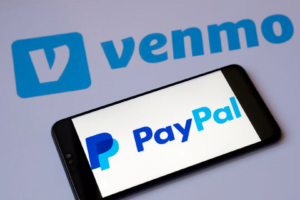There’s a new buzzword in business software these days. It’s called procure-to-pay or purchase-to-pay, P2P for short.
It refers to the steps an organization follows to purchase goods and services from vendors. The P2P process involves stages from identifying the need for goods or services and concluding with the payment to the supplier.
It encompasses the entire process. A good P2P software vendor can automate the entire process or provide a solution for only one component, such as invoice management software.
Importance of Procure-to-Pay
Blog Contents
The process is made up of several integrated steps.
- Identifying a need
- Generating a requisition
- Generating a Purchase Order
- Receiving and verifying goods
- Invoice & PO Matching
- Payment Processing
It’s important to ensure that every step is performed as efficiently as possible. The process has a significant impact on the profitability of your business.
Challenges in Traditional Processes
Non-digital processes present challenges to an organization. Some of these are very difficult to overcome. The most common difficulties are human error, cost, limited visibility, and compliance issues.
Human error in manual data entry is commonplace. Even the most diligent of employees will have a hard time achieving 100% accuracy.
Manually entering large amounts of data daily is not only error-prone, but it is also costly. It is very labor intensive which takes away time employees could spend on other more productive activities.
Finding information in paper files can be difficult. It is hard to track and analyze inventory levels, supplier performance, and other key metrics by searching through paper files.
Poor controls and manual procurement processes can lead to non-compliance issues with regulations, contract terms, or internal company policies.
Wherever possible, you should use technology to your advantage.
Advantages of Procure-to-Pay Software
P2P software solutions are designed to streamline the procurement process by automating repetitive tasks.
Reducing manual effort minimizes errors and reduces costs. Automating the most repetitive tasks in the procurement process increases accuracy.
By providing greater transparency, decision-makers can track orders, monitor supplier performance, and identify potential issues before they develop. This leads to better decision-making and improves control of the entire procurement process.
P2P systems help businesses stay in compliance with official regulations. They can flag potential issues and reduce the risk of financial loss and reputational damage.
Most procure-to-pay solutions offer robust analytics and reporting capabilities. This helps organizations make data-driven decisions and pursue continuous improvement.
Future of Procure-to-Pay
Expect artificial intelligence to play an increasing role in P2P software solutions. Its ability to automate routine tasks and allow human workers to focus on more critical functions is one of its primary benefits.
Using AI you can automatically generate purchase orders, match invoices to purchase orders, and approve payments. That will simplify your procurement process and reduce costs.
There are challenges with integrating AI into your procurement process. In this case, the benefits outweigh the challenges. It is critically important to ensure the set-up is done properly.
Artificial Intelligence is inserting itself into business processes in every industry. The ability to analyze massive amounts of data and refine it into useable intelligence is too great to pass up.





![5 Best Methods How to fix [pii_email_e6685ca0de00abf1e4d5] error? [pii_email_cbd448bbd34c985e423c]](https://stylebuzzer.com/wp-content/uploads/2021/04/How-to-fix-pii_email_e6685ca0de00abf1e4d5-300x200.jpg)

![3 Best Methods to fix [pii_email_b47d29538f12c20da426] error [pii_email_b47d29538f12c20da426]](https://stylebuzzer.com/wp-content/uploads/2021/04/how-to-fix-pii_email_b47d29538f12c20da426-300x199.jpg)